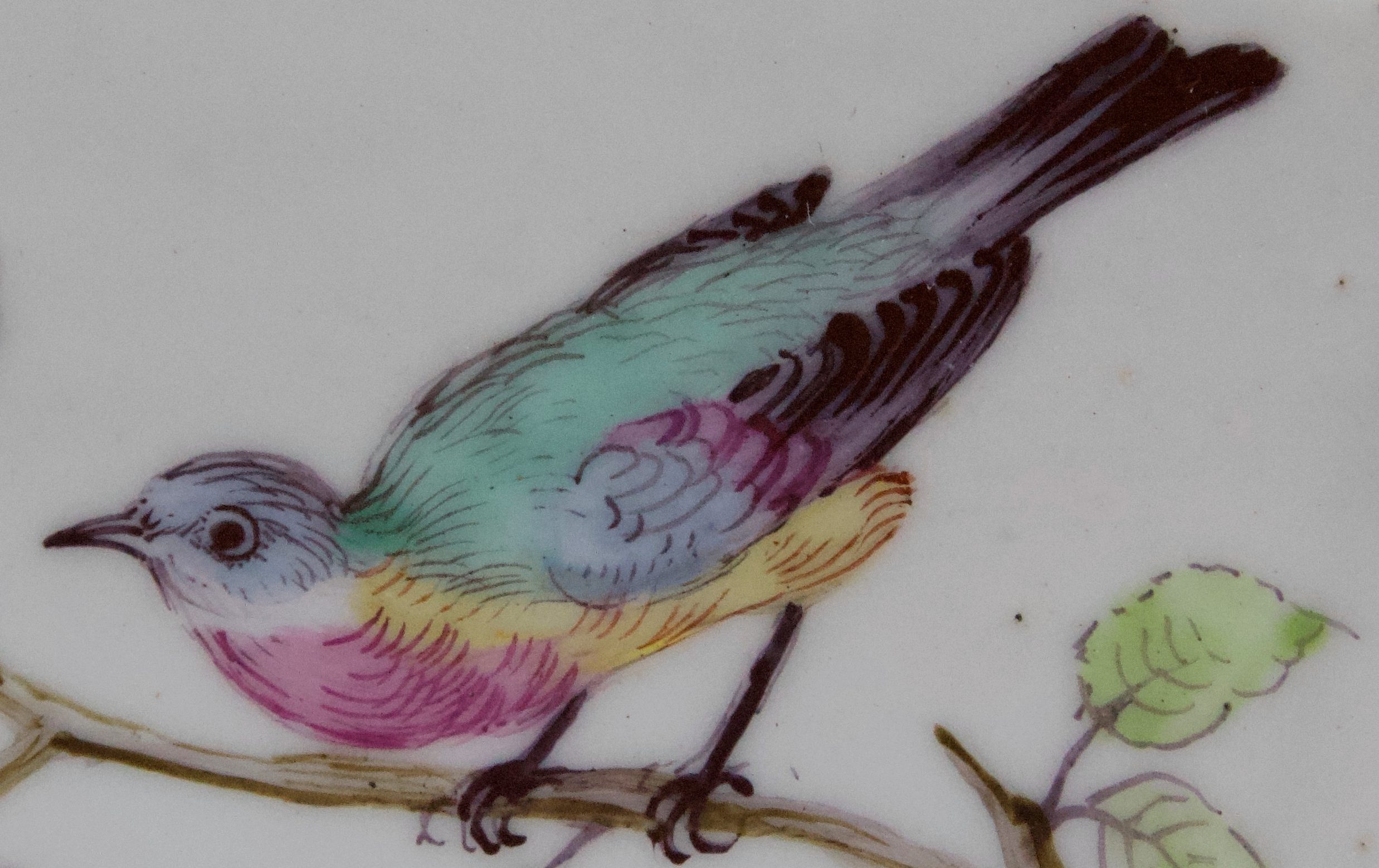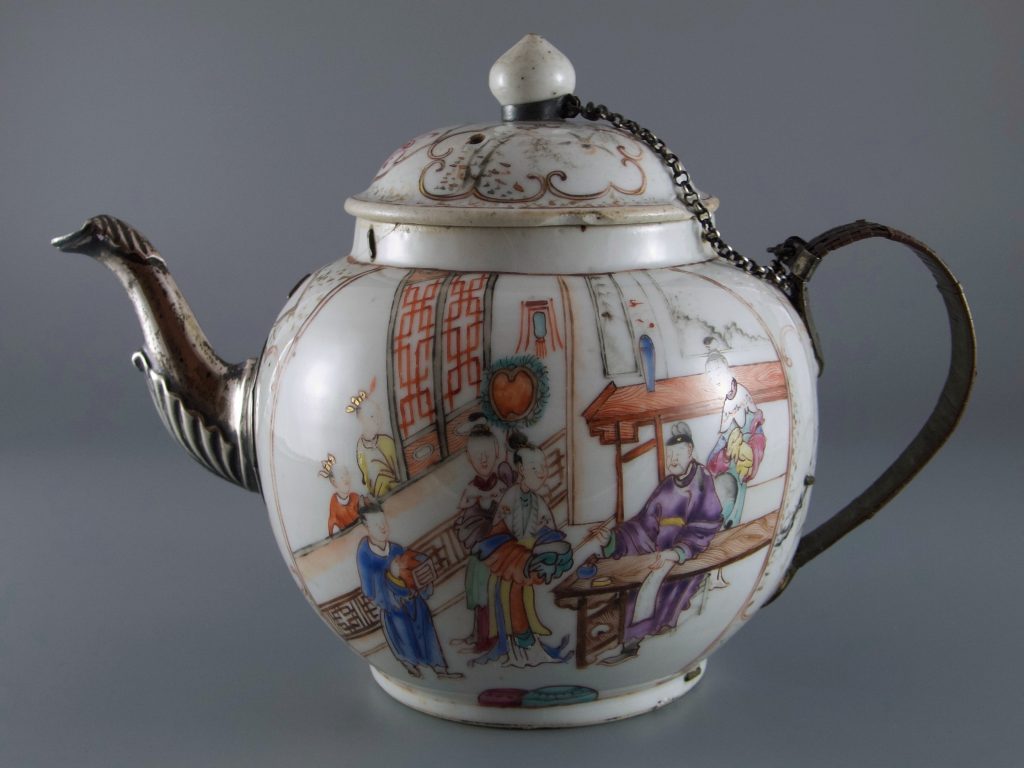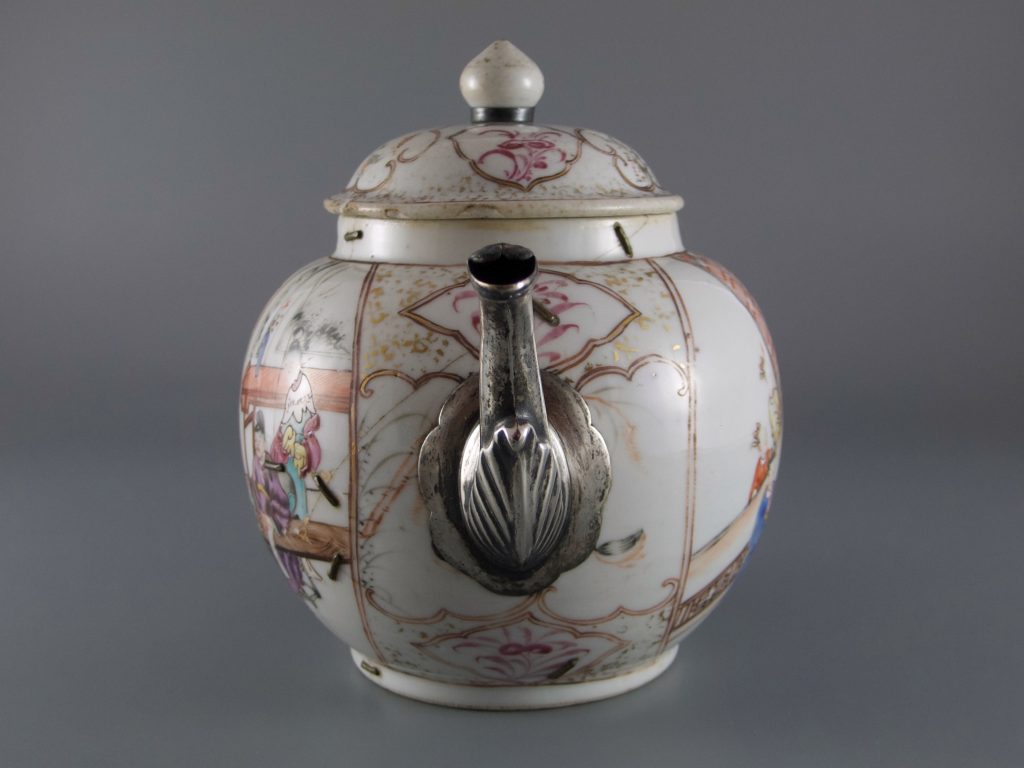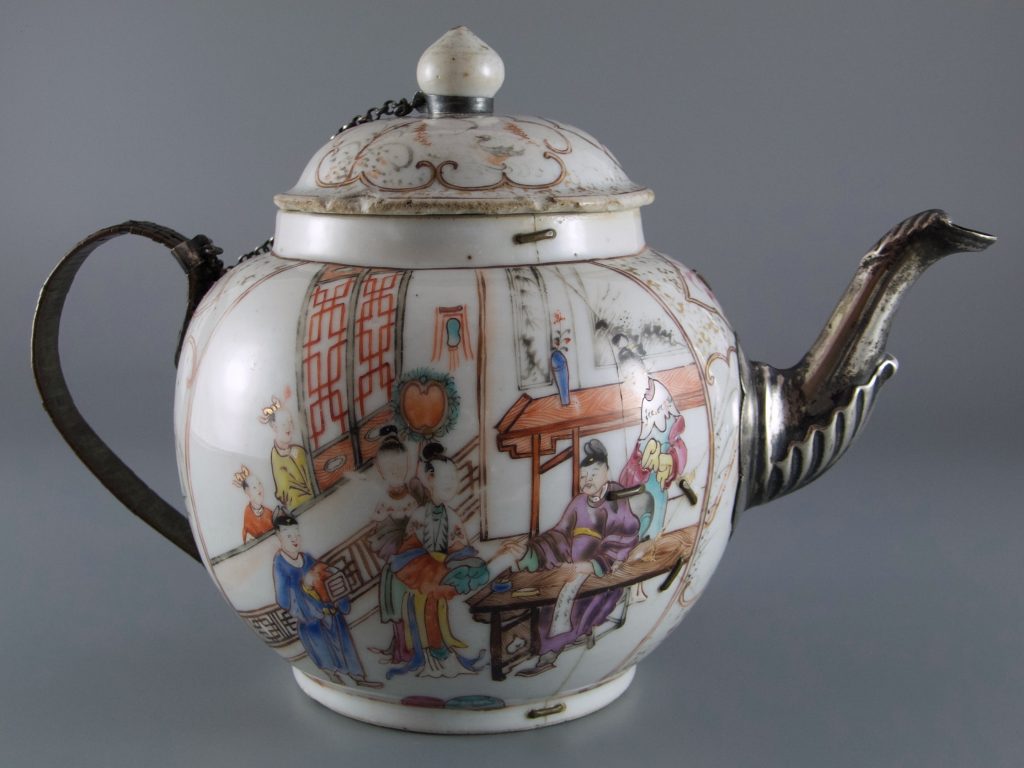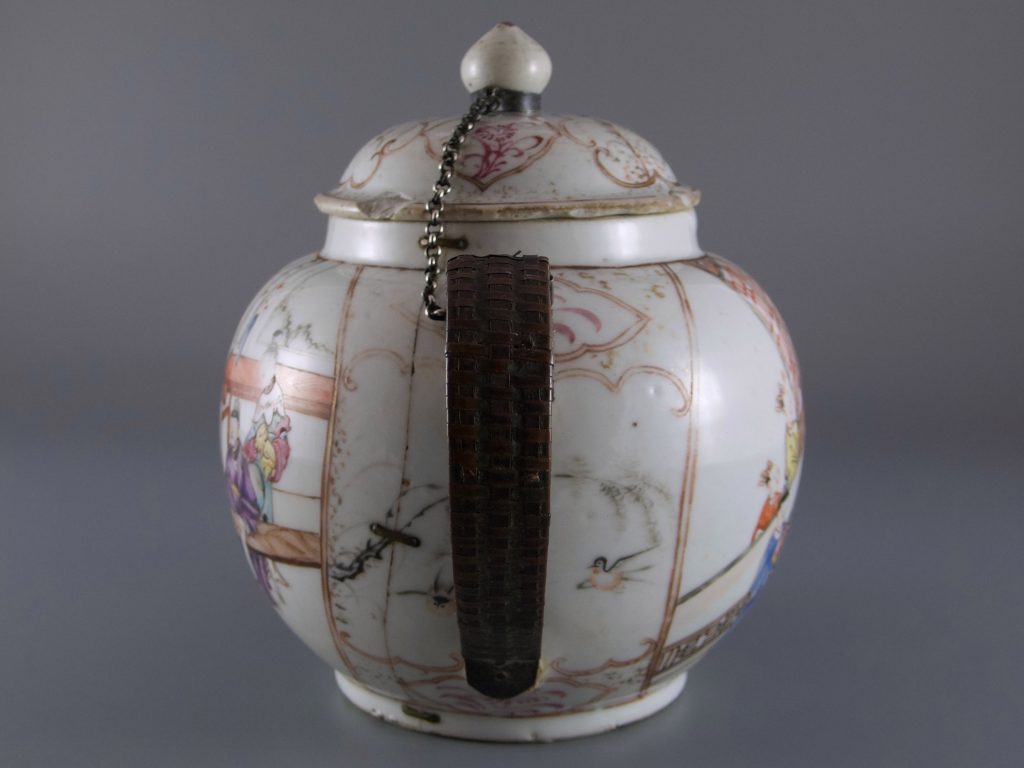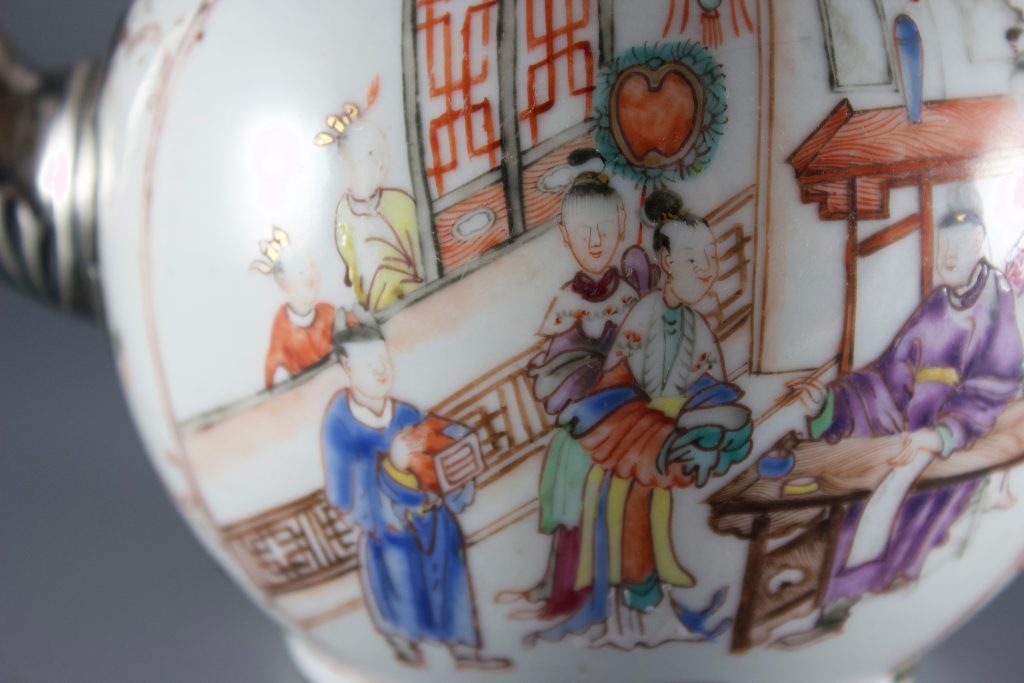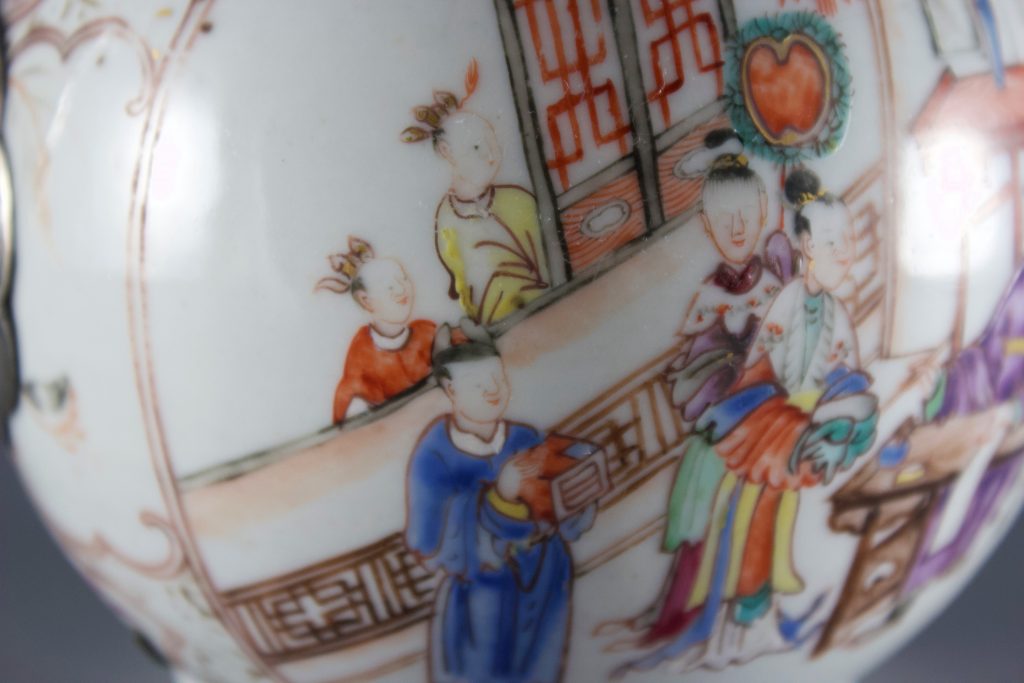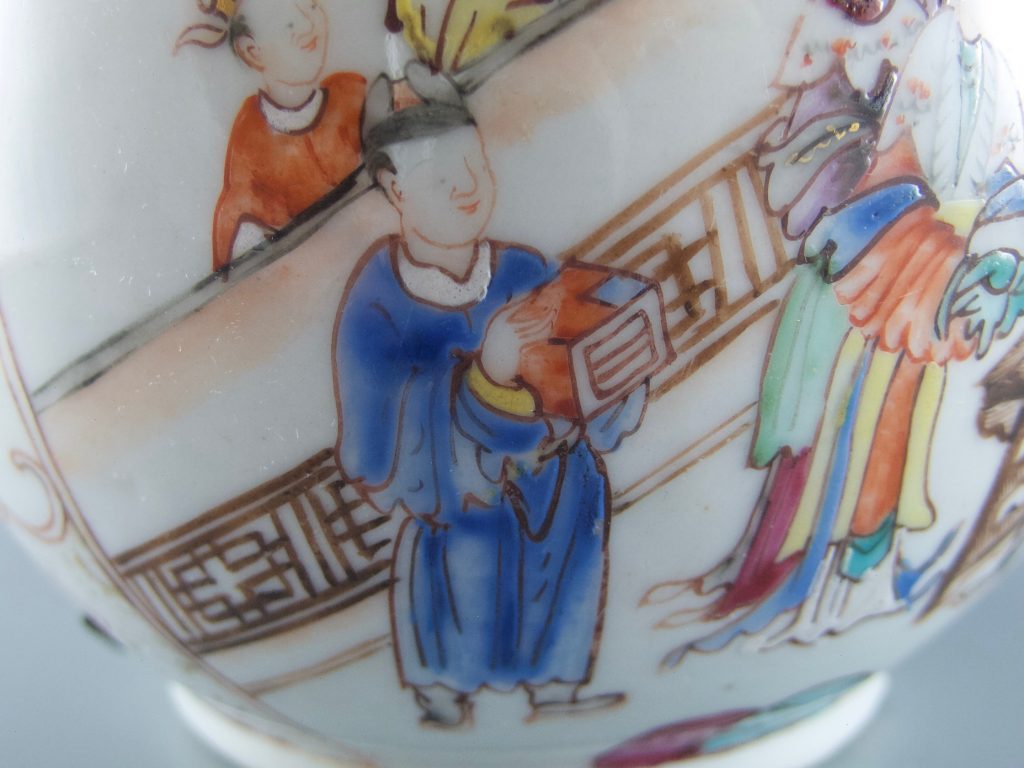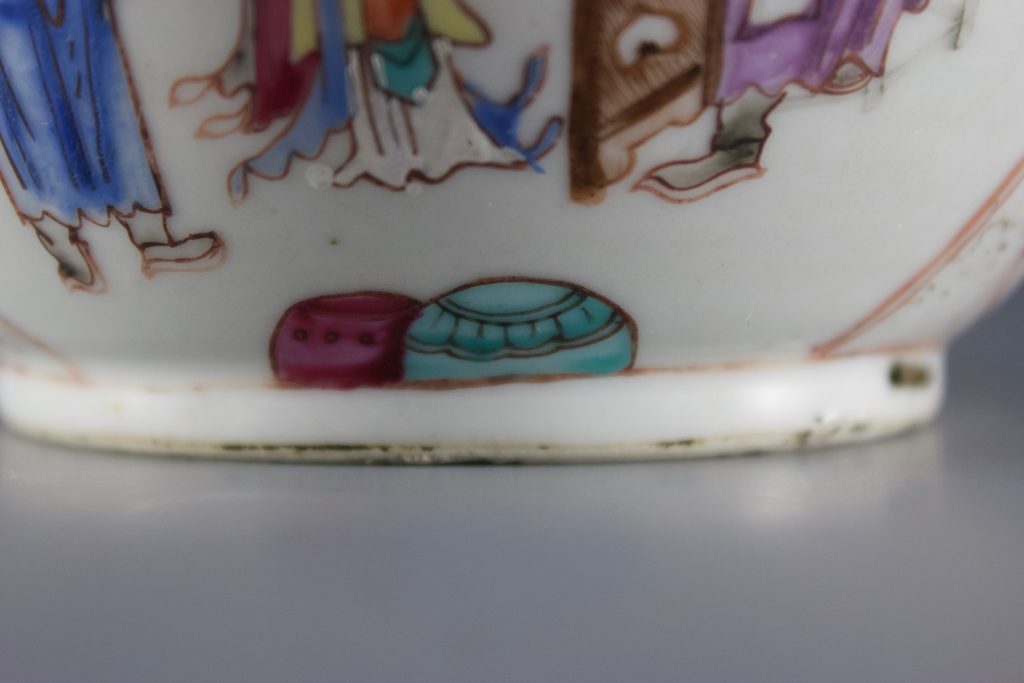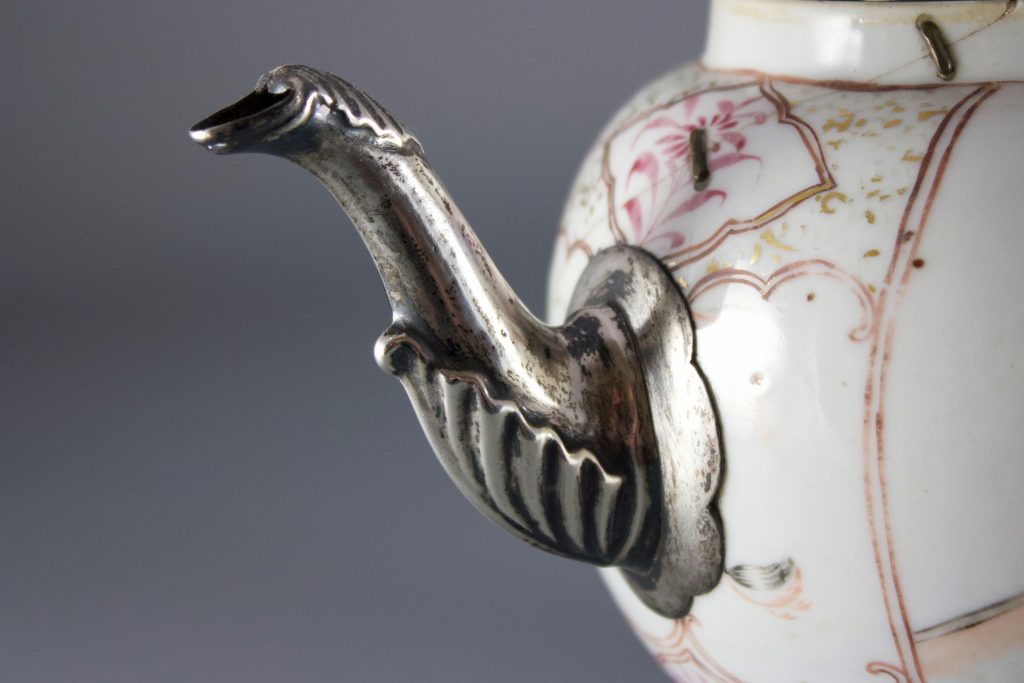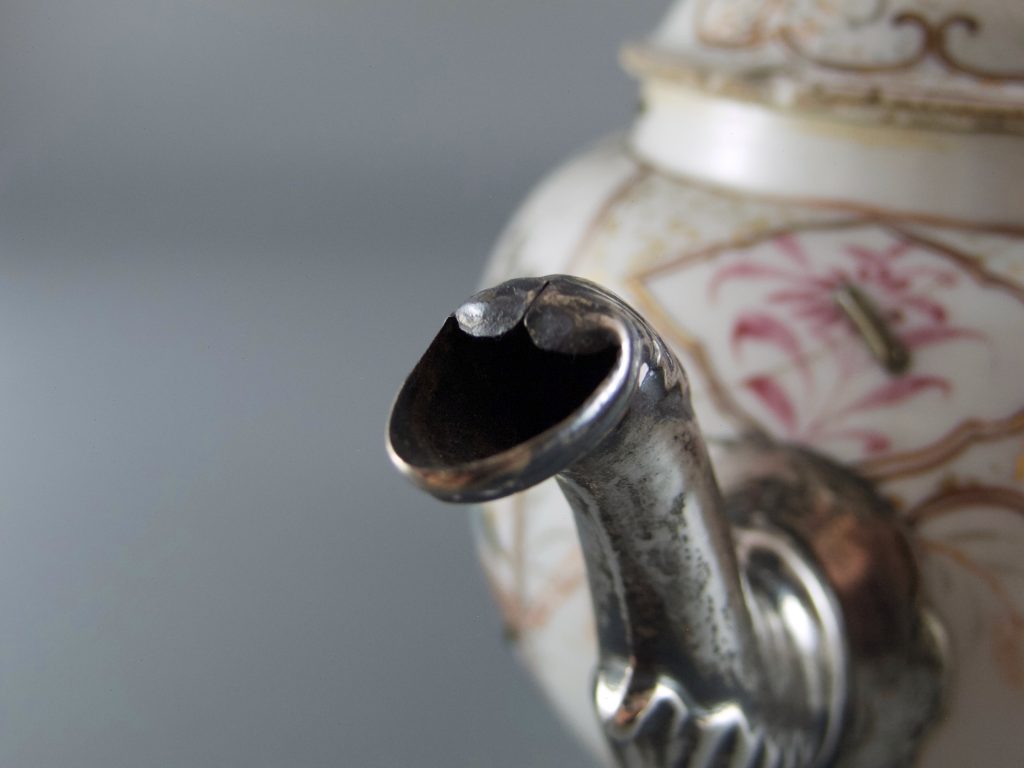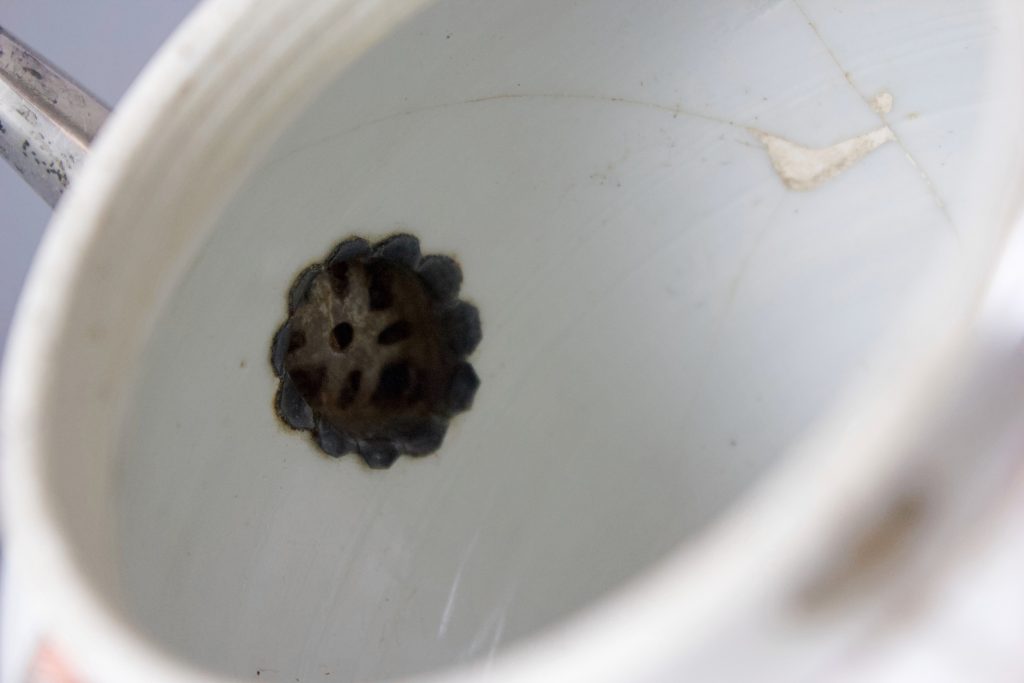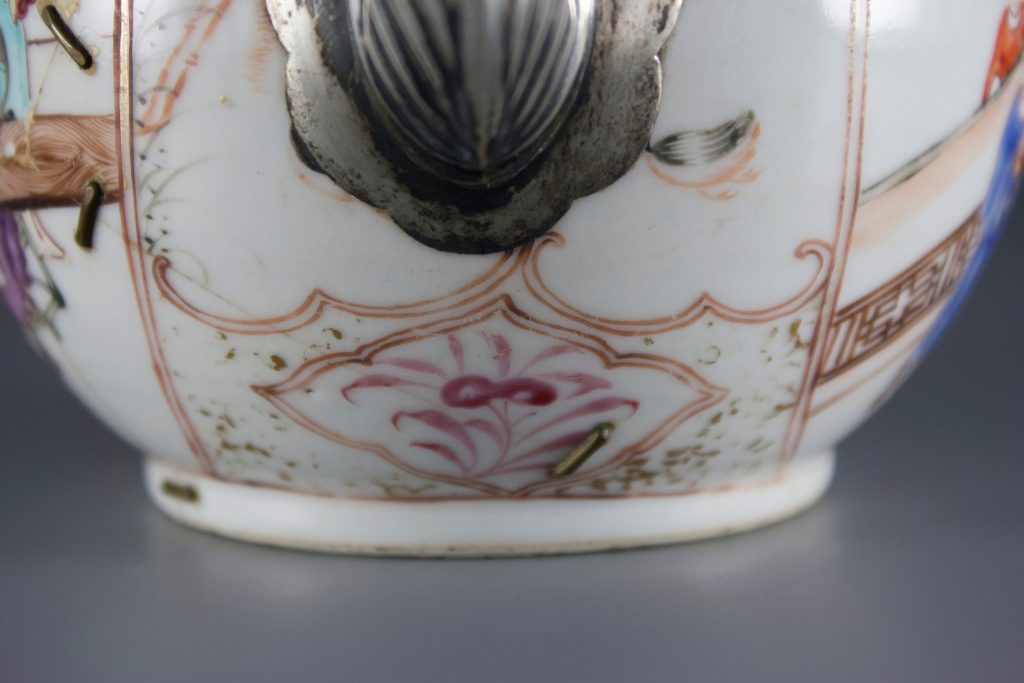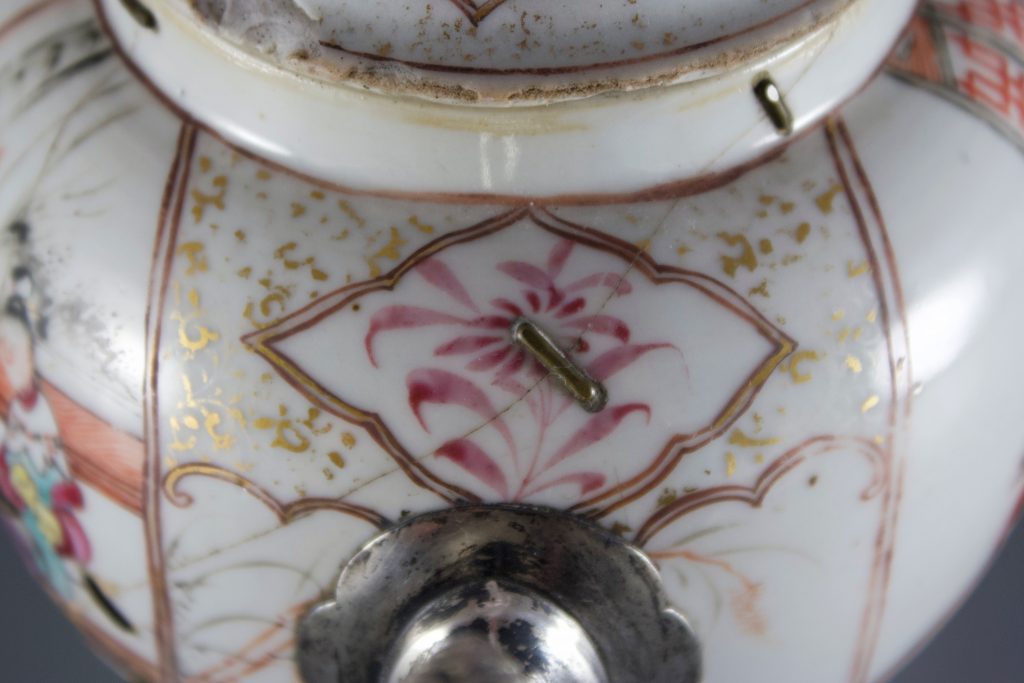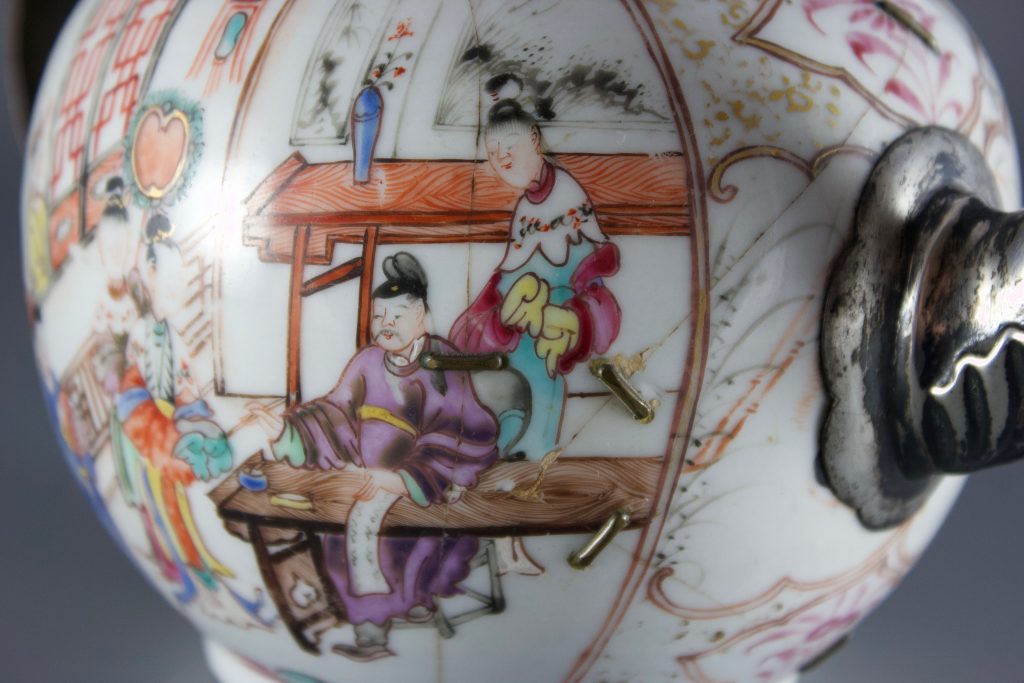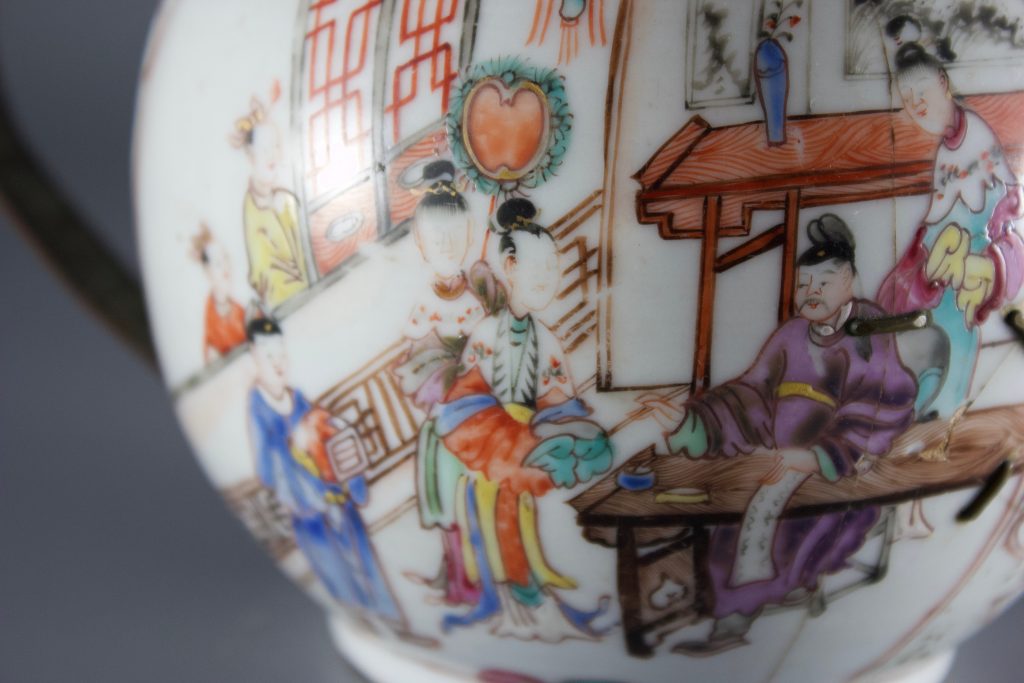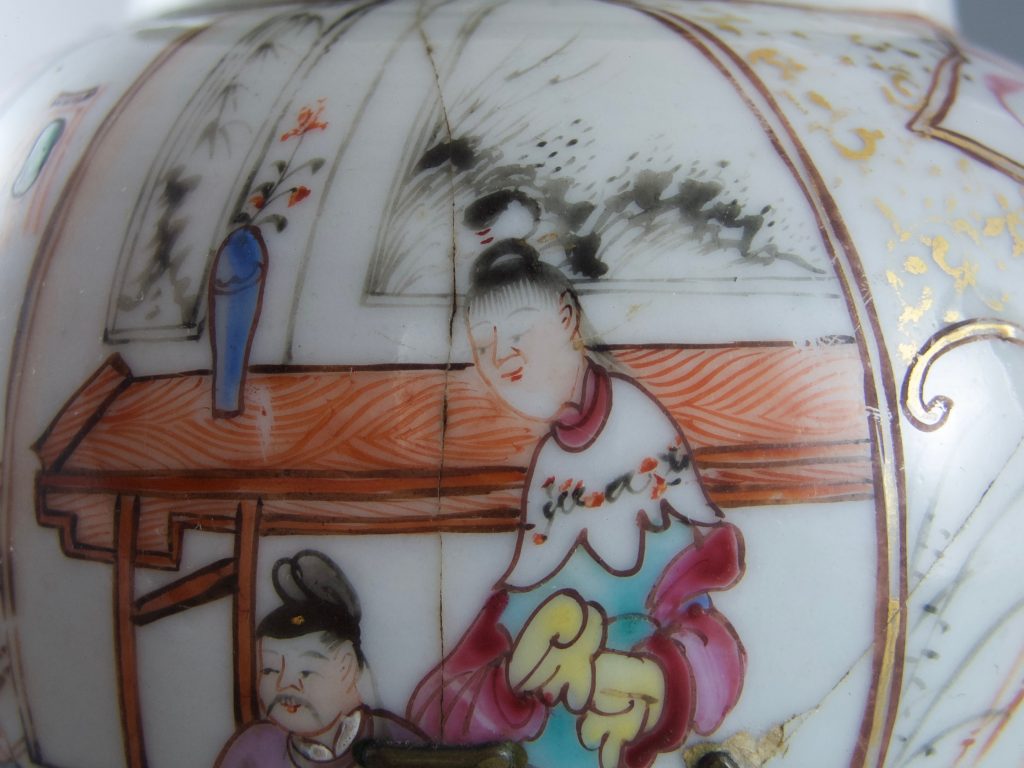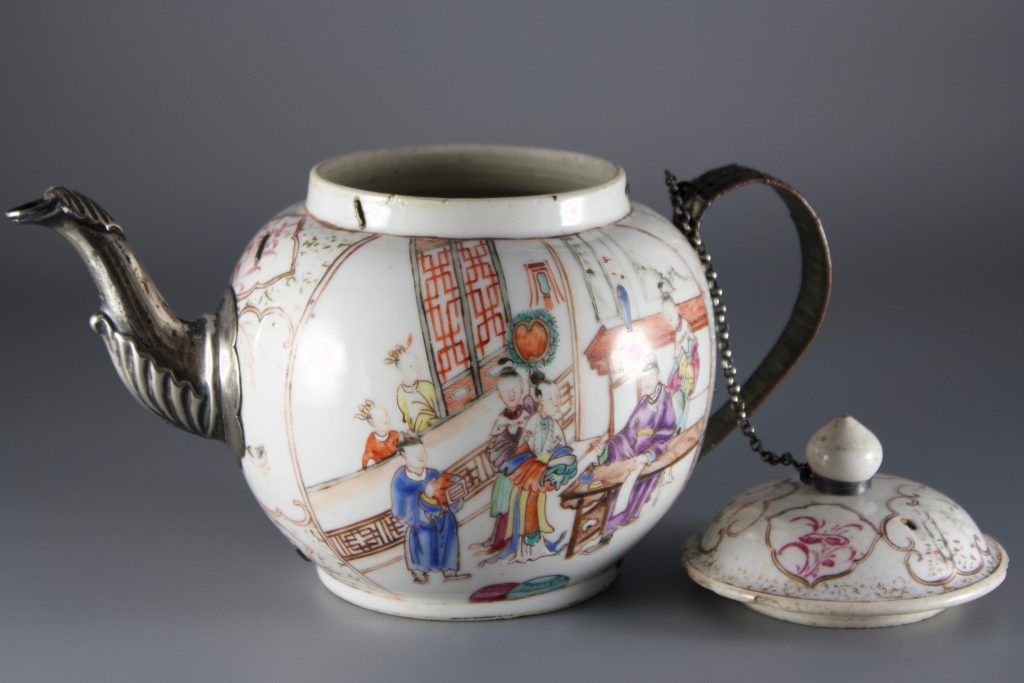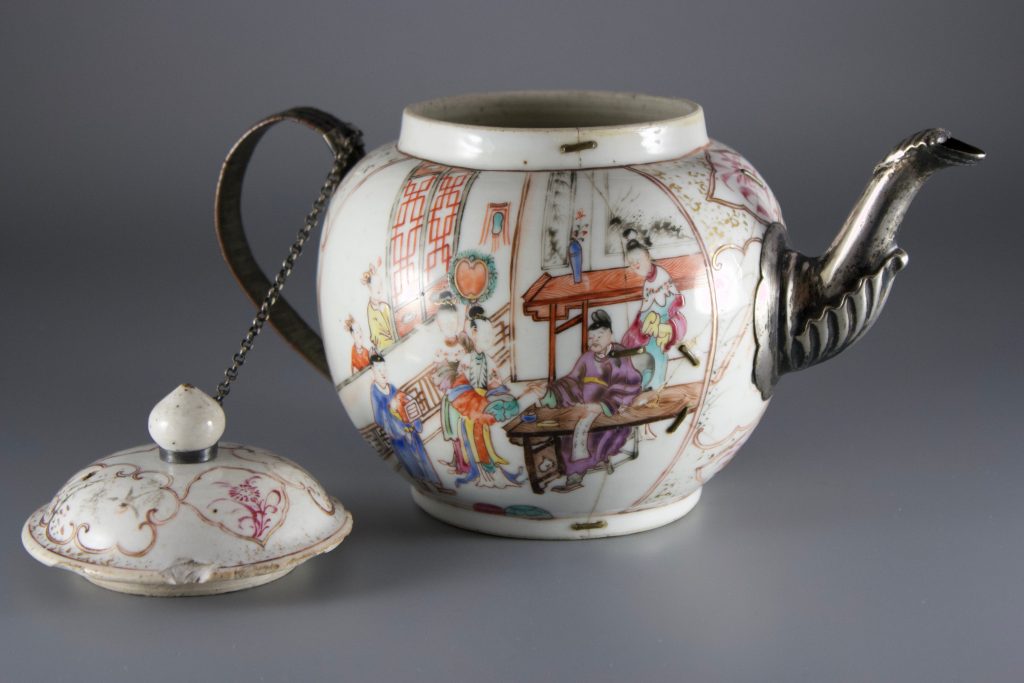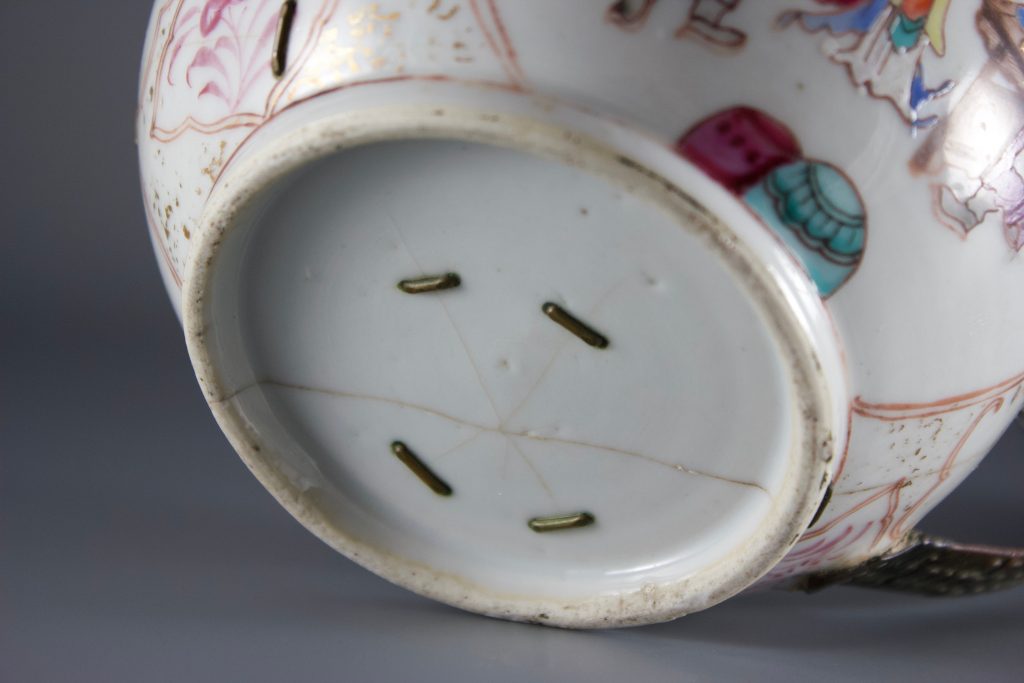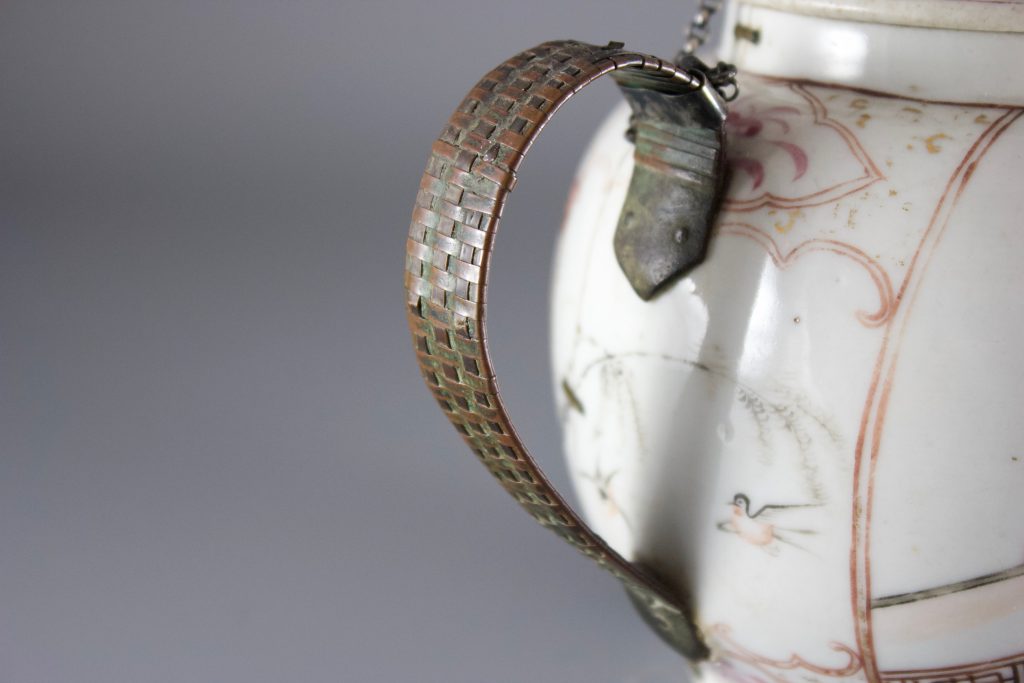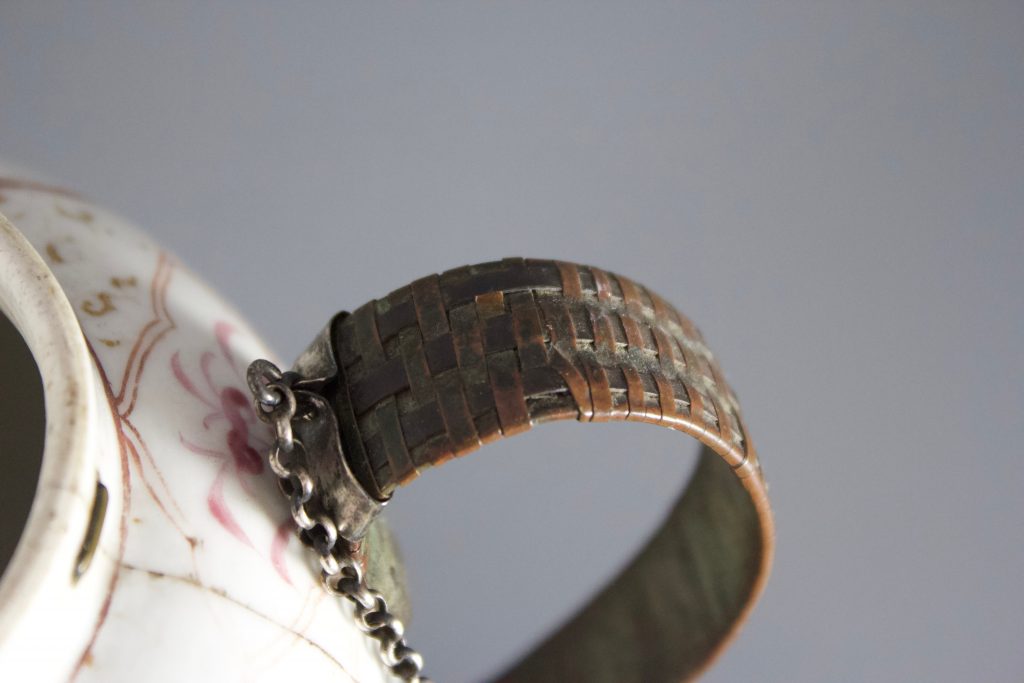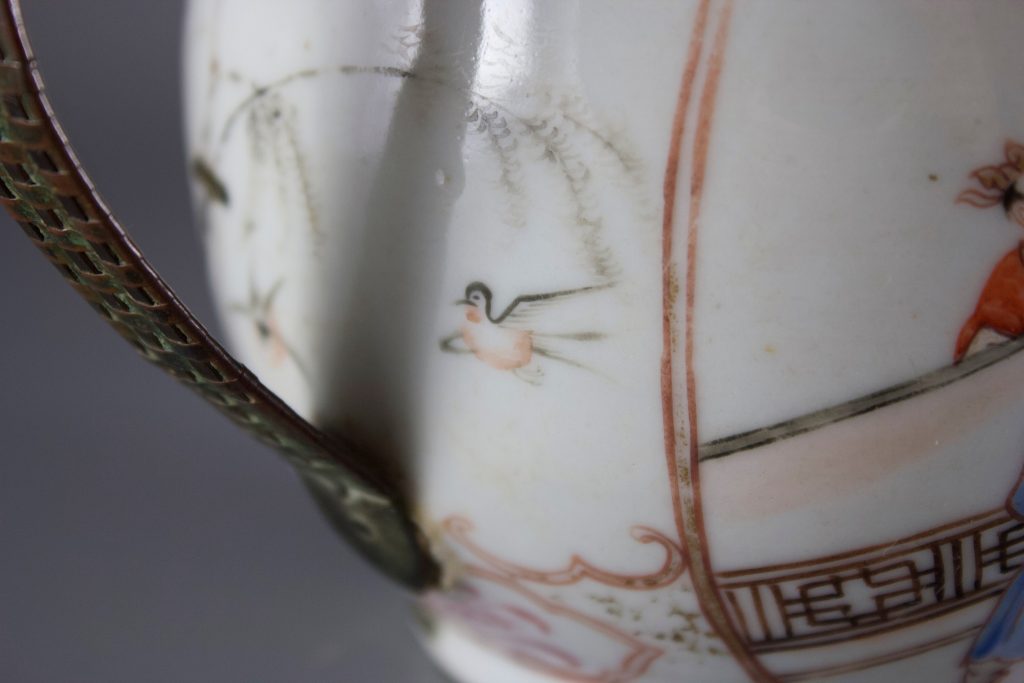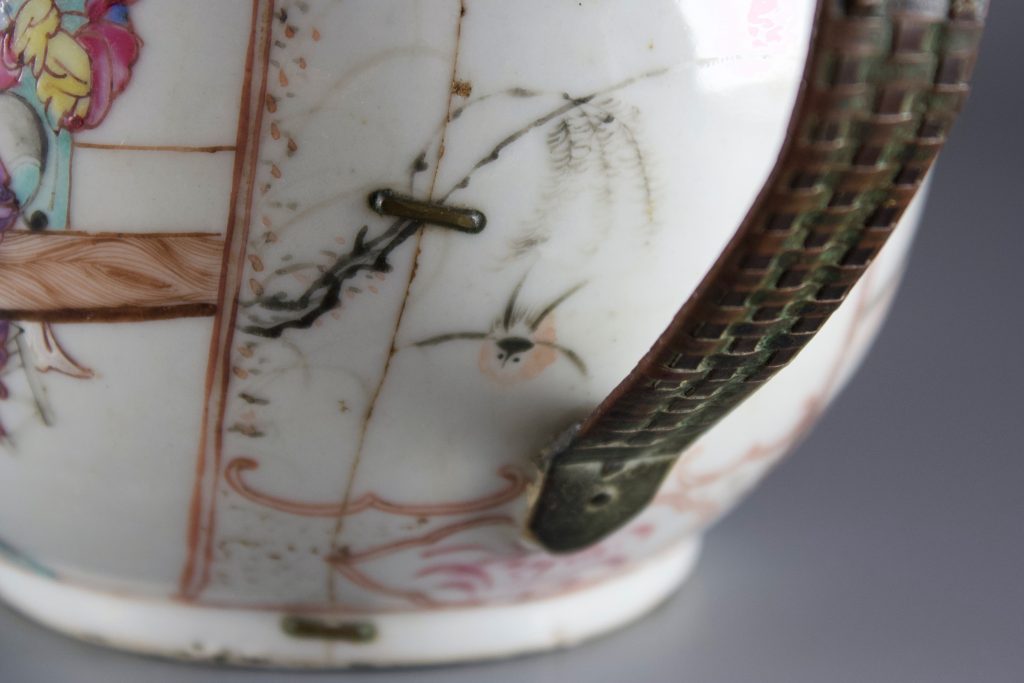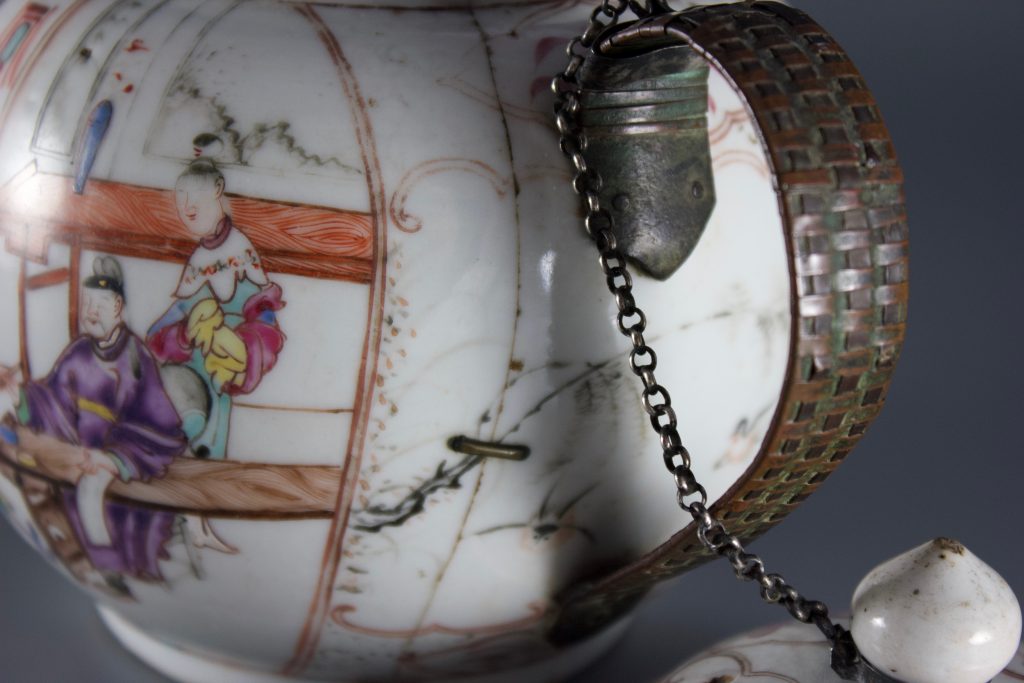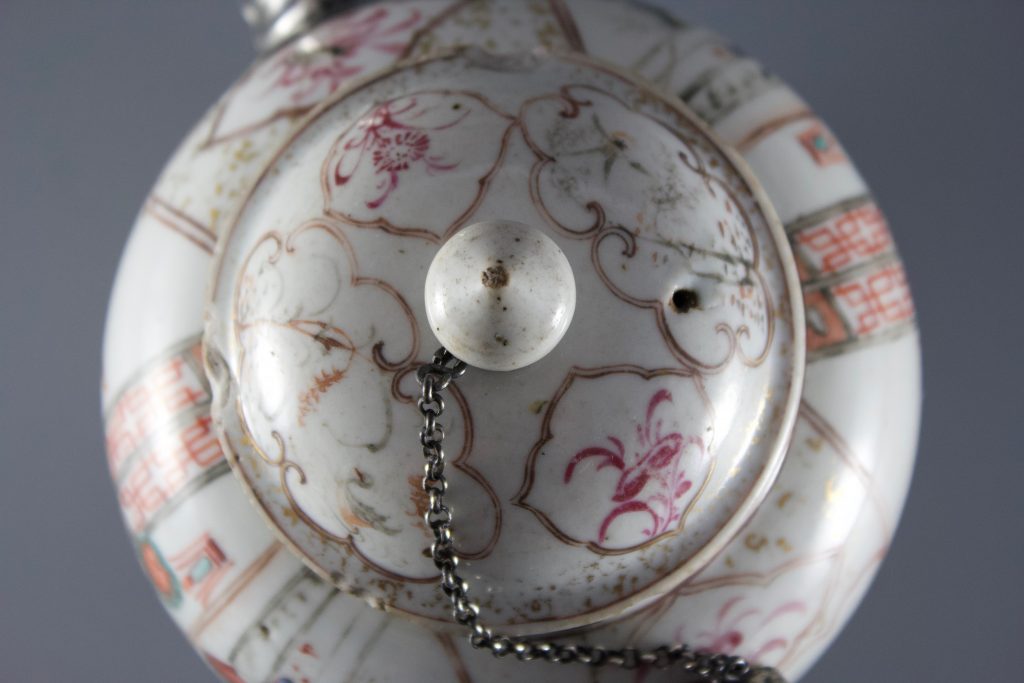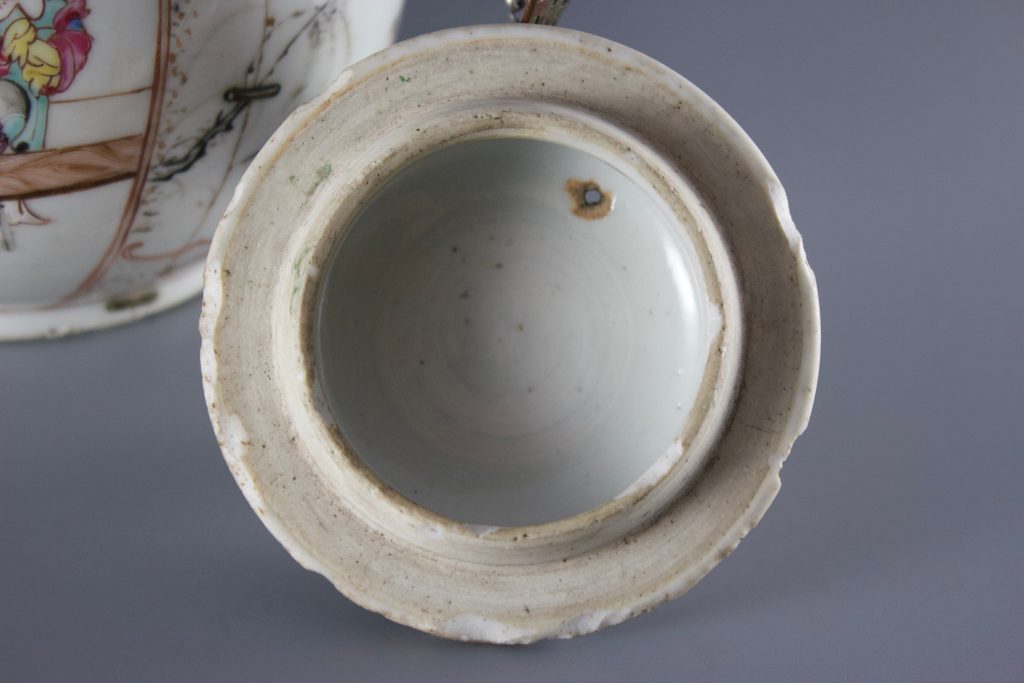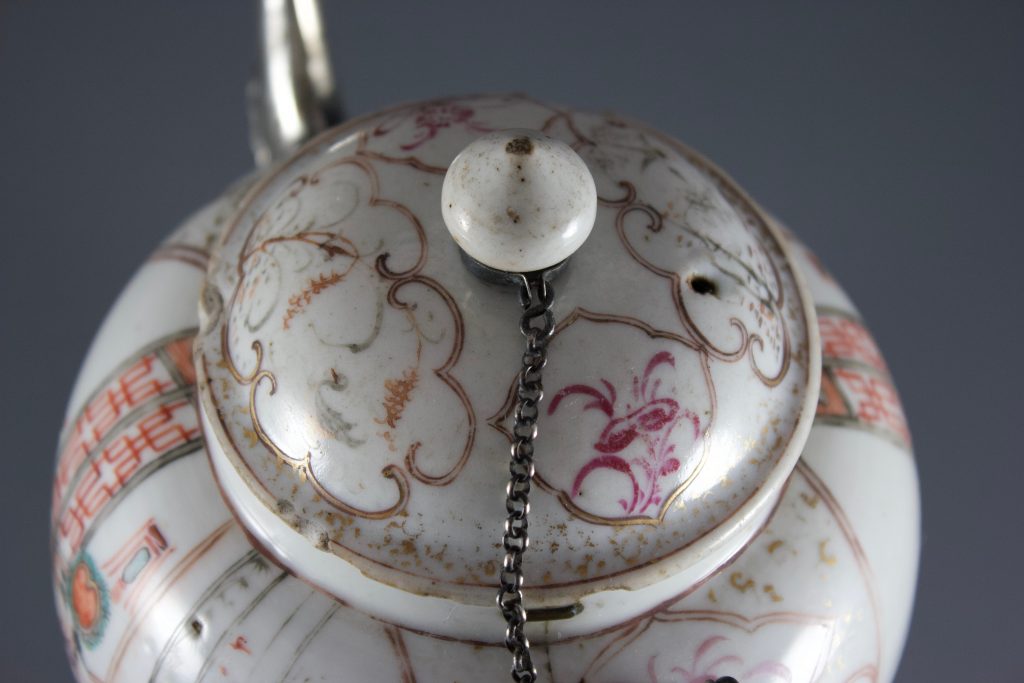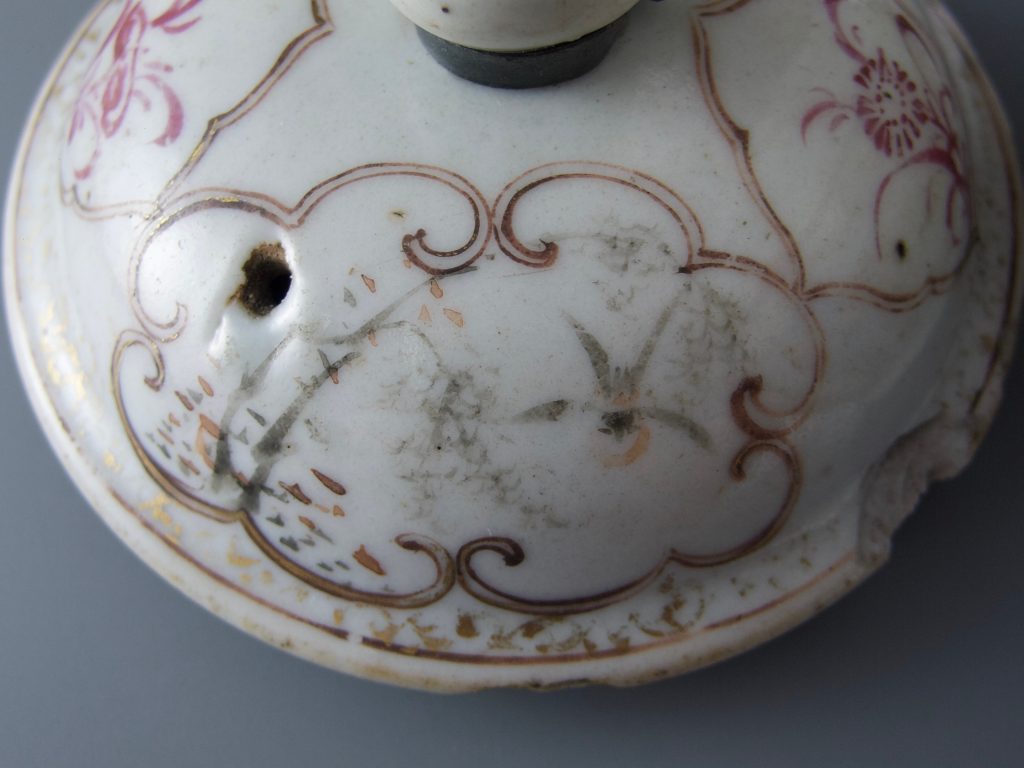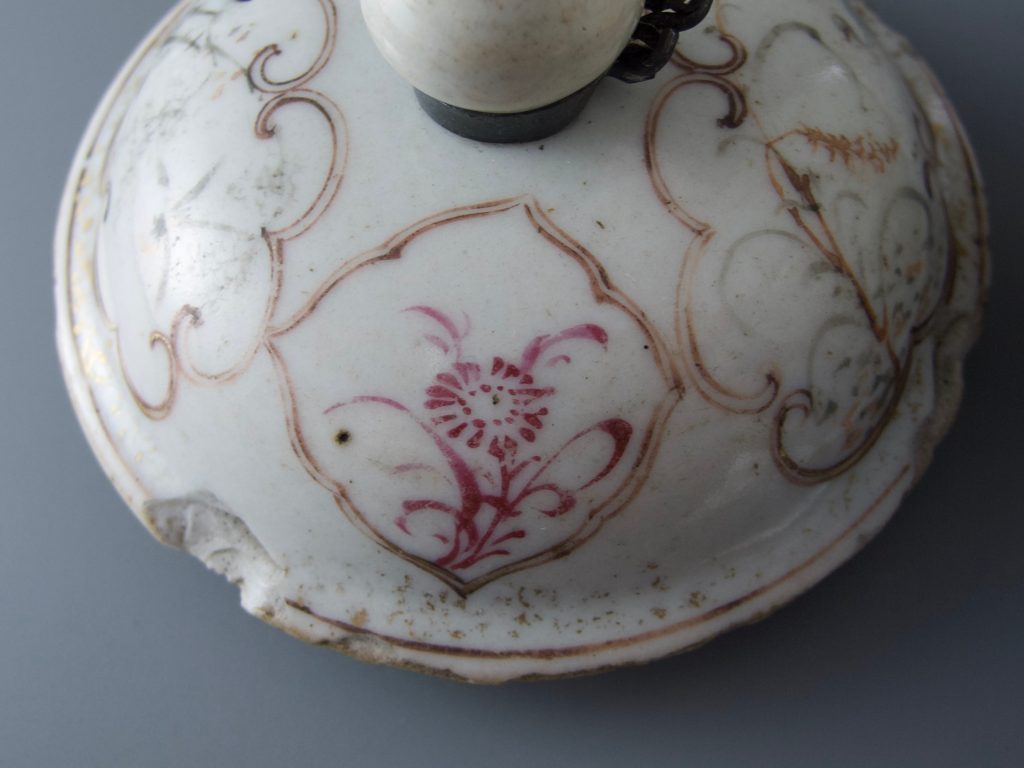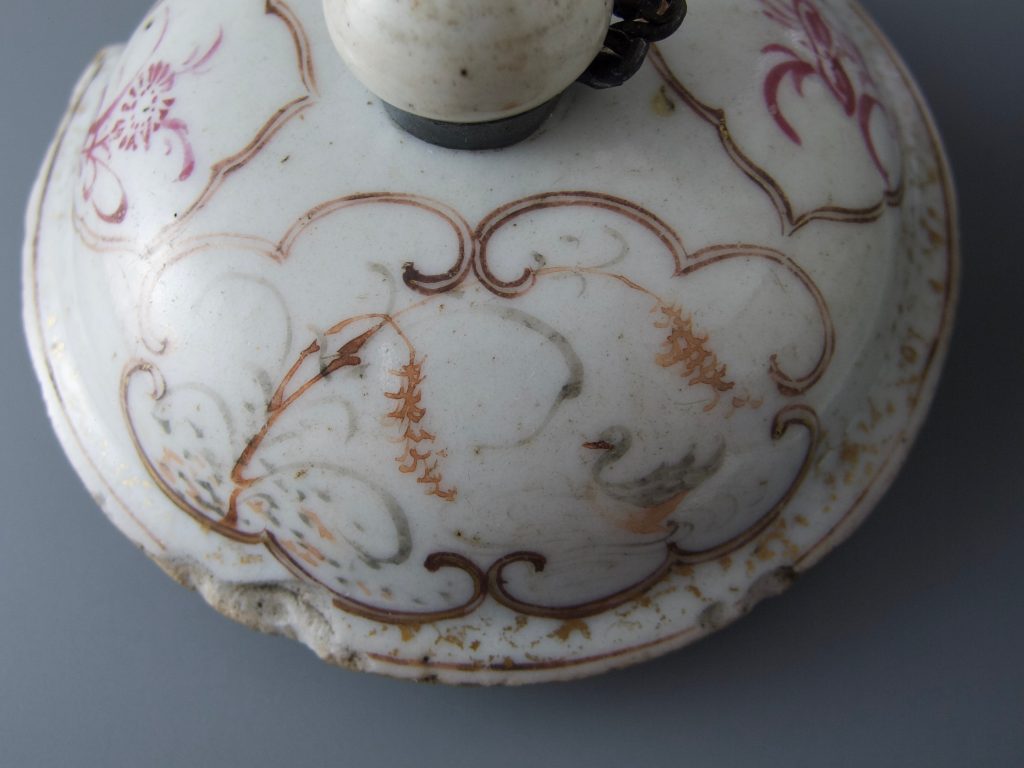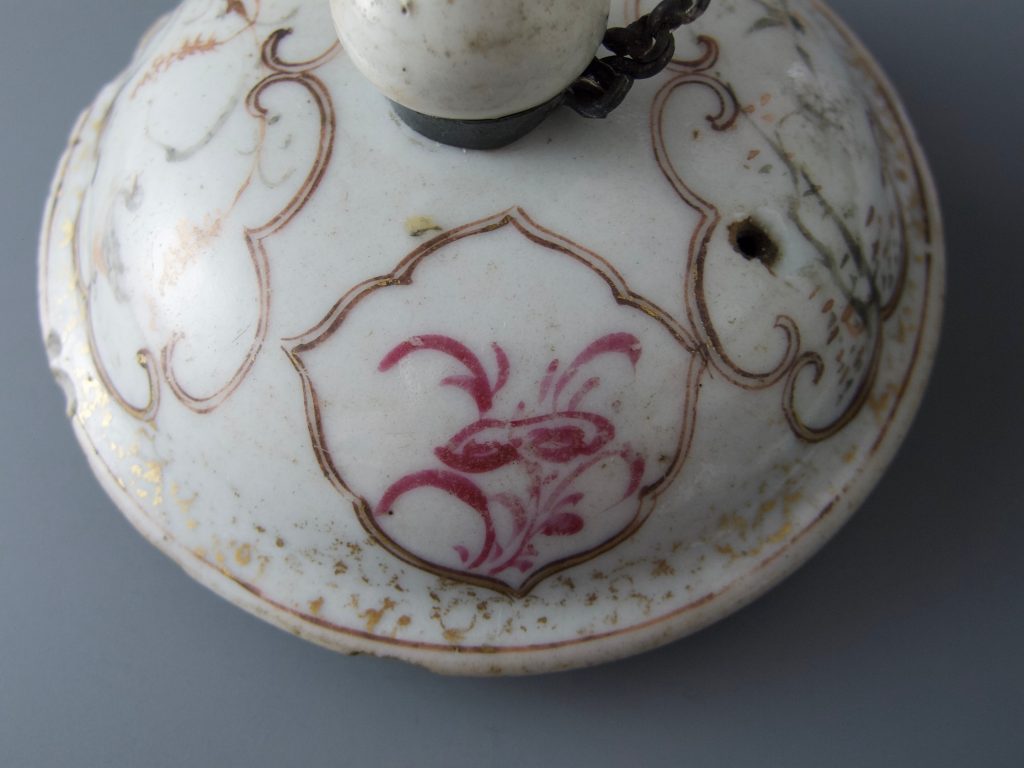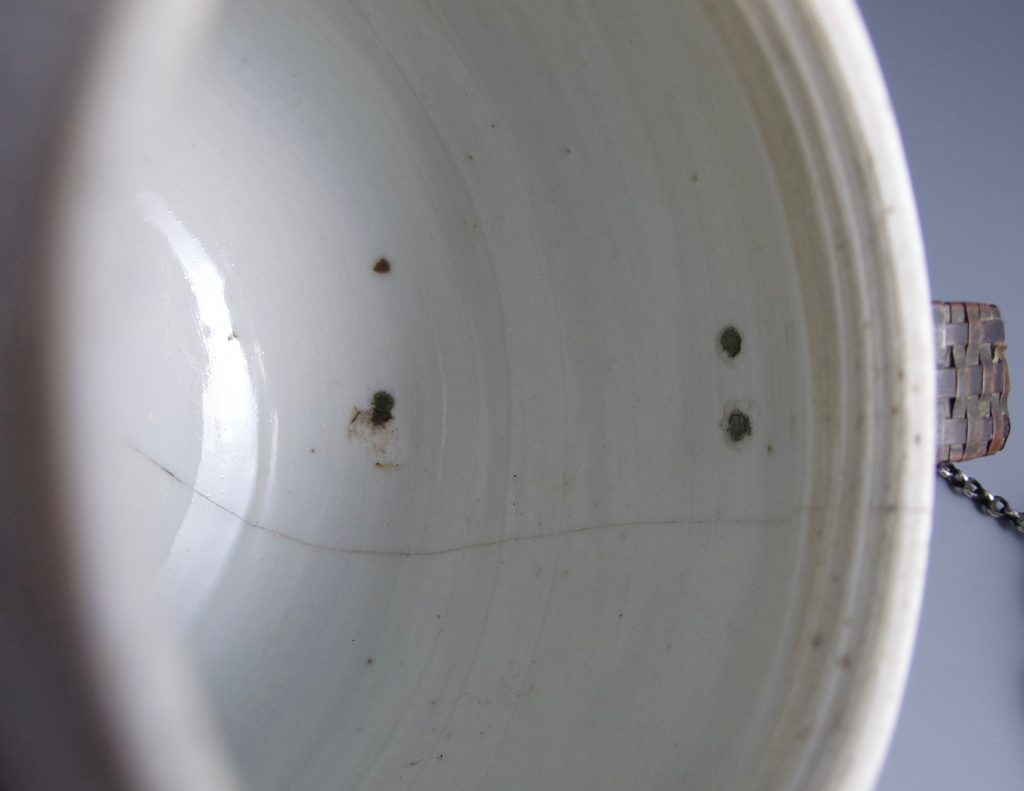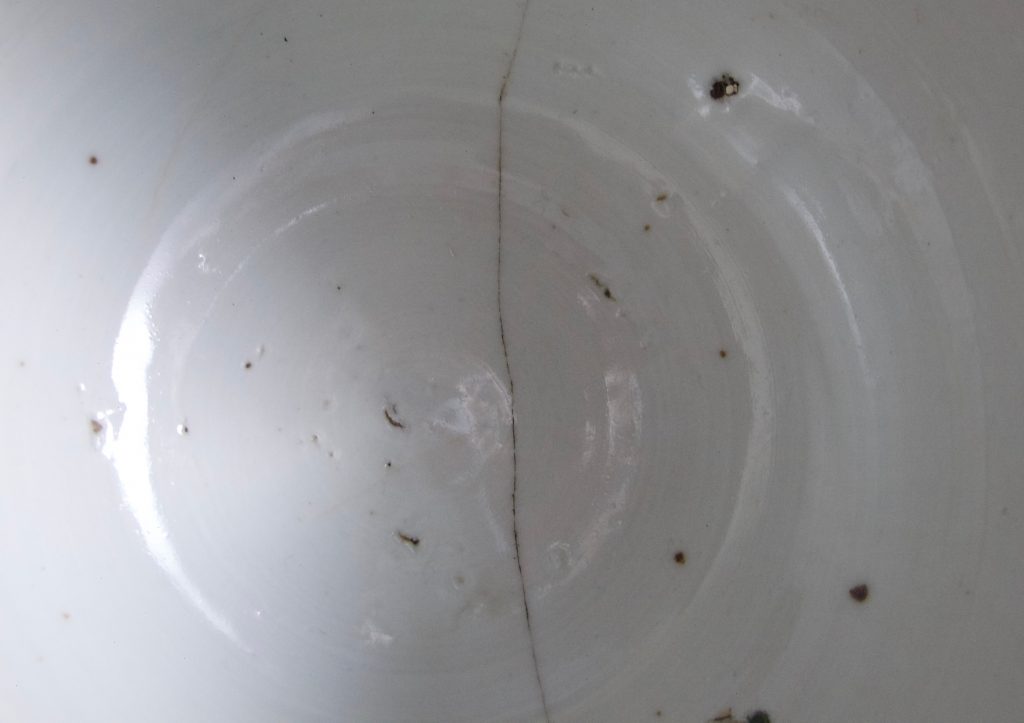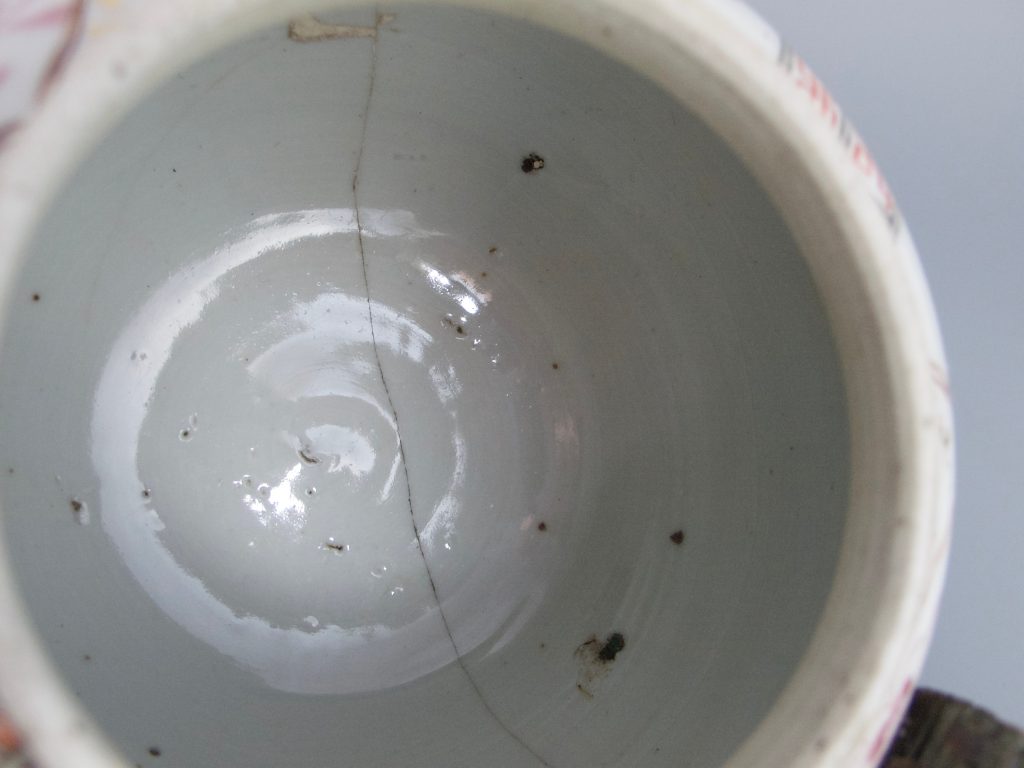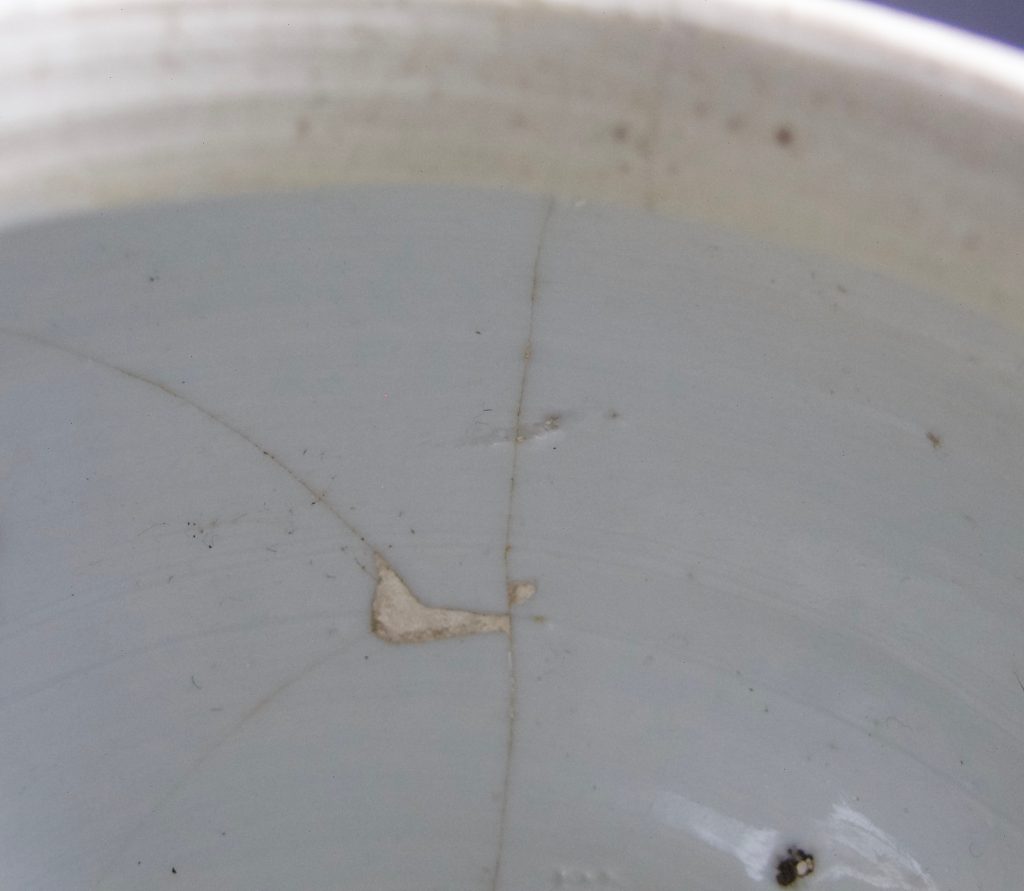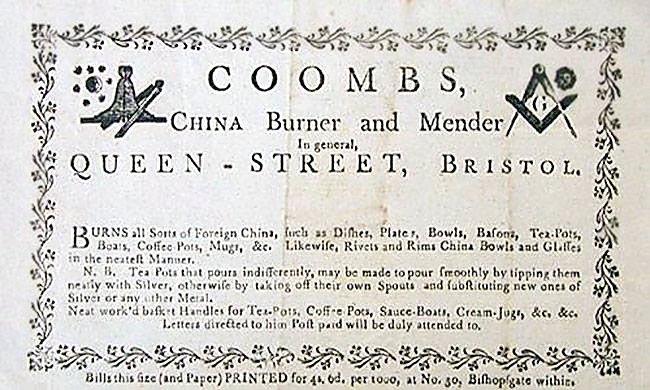A Chinese Teapot and Cover, Qianlong, circa 1760
This Qianlong Chinese export teapot and cover is decorated in bright enamels in a style known as mandarin porcelain. The scene (depicted in a cartouche on both sides of the teapot) shows a well-dressed gentleman of obvious status and learning seated at a desk in a handsomely furnished interior. On the desk are what appears to be an inkstone and a receptacle for ink. Holding an ink brush in his right hand, he is practising the art of calligraphy on a paper scroll laid out before him. Ink brushes (máobi), Chinese ink, paper, and inkstones are known as the Four Friends of the Study. Calligraphy was the visual art form prized above all others in traditional China. The gentleman is surrounded by attendants, including a fanbearer. Details are picked out with gilding. The areas surrounding the handle and the spout are decorated with arabesque cartouches containing birds in flight and also flowers in puce monochrome. Similar designs are repeated on the cover. A collar surrounding the knop links the cover to the handle with a silver chain.
The silver teapot spout was added at some point during the 18th century, as was the metal handle covered with woven rattan.
‘Tea Pots that pours (sic) indifferently, may be made to pour smoothly by tipping them neatly with Silver, otherwise by taking off their own Spouts and substituting new ones of Silver or any other Metal. Neat work’d basket handles for Tea-Pots, Coffee-Pots, Sauce-Boats, Cream-Jugs, &c, &c.‘. (Trade card of Edward Coombs, China Burner and Mender – see the last image).
One notable mender of ceramics was Edward Coombs (also Coombes) of Queen Street, Bristol, who flourished during the late 18th century. Coombs styled himself as a China Burner, and would use various methods to repair ceramics, often signing his work. The V&A Museum has a Chinese porcelain tea bowl (C.14-2008) with a ‘glass bonded’ repair, signed ‘Coombes Queen Street Bristol‘.
Condition: In addition to the replacement handle and spout, the teapot itself has been broken and repaired with staples. The cover also has a number of chips around the edge and whilst it is obviously the original cover, it is not a tight fit. There is wear from use to the gilt decoration and also areas of the enamel. There is no further damage or restoration.
Dimensions: Height (to top of knop) 15 cm
A Handbook of Chinese Ceramics, Suzanne G. Valenstein (Weidenfeld and Nicolson, 1989).
Chinese Ceramics, Masahiko Sato (Weatherhill/Heibonsha, 1978).
